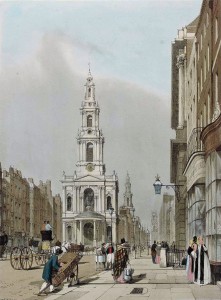Falling Down the Thames Blog 29, 01st October 2014
Annus Mirabilis and Annus Horribilis
Falling Down the Thames will require nearly three weeks of padding. By itself, greater London is so large that it will take several days in late April and early May of next year for Krista and I to pass through it. In doing so, our River Thames adventure will take us through one of the most recognizable landscapes on Earth. After the Eiffel Tower in Paris, I suspect that the Palace of Westminster and the great clock tower housing Big Ben facing the River Thames is the world’s most recognizable landmarks. London is, I believe, one of the world’s truly great cities.
But as for people, cities have good years and bad years, London included.
The Metropolitan Railway, the world’s first underground railway and now part of the London Underground, opened for business in 1863, making that a pretty good year for the capital city. And 1605 must be considered a particularly good year, and least for King George and members of the House of Lords who were not blown to smithereens by Guy Fawkes and his co-conspirators. Residents of London celebrated with gusto in 1953 for the coronation of Her Majesty Queen Elizabeth II. Each of these was a good year, an Annus Mirabilis.
London went through a particularly bad spell in 1665 and 1666. At that time the last of the really awful outbreaks of bubonic plague killed off about 100,000 people, followed quickly by a fire that left almost everyone in central London homeless. In Latin, it was an Annus Horribilis.
Then there are years in which nothing particularly noteworthy happened in the city by the Thames, and 1717 was one of those years. I had to dig deep to find anything at all.
Botanist and book collector Emanuel Mendez da Costa was born that year. The first ballet ever staged in England, The Loves of Venus and Mars, was seen by Londoners. Catherine Sedley, the Countess of Dorcester, and one of the mistresses of King James the Second, died in 1717. A maypole that had been constructed in 1661 was dismantled in 1717 and given to Isaac Newton to be used as a base for a telescope. The steeple of the church of St. Mary le Strand was completed that year under the direction of architect James Gibbs. King George threw his son out of the royal household in 1717, and Free Masons founded the Grand Lodge of London and Westminster… Nothing terribly riveting. A Mediocris Anno.
With one exception. Next week I will tell you about composer George Handel and a wonderful piece of music with an intimate connection to the River Thames.
- Glen
Photo credits: The Great Fire of London – www.hearthtax.org.uk; St. Mary Le Strand - partleton.co.uk


